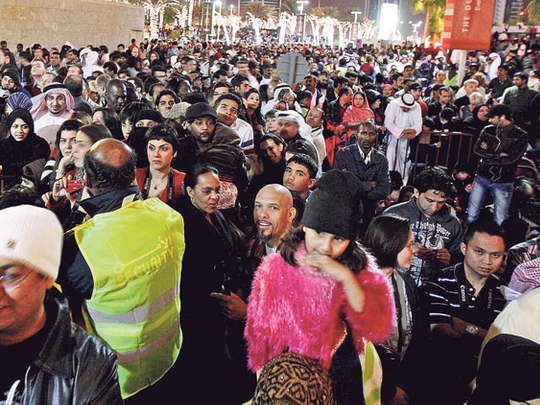
Dubai: Dubai's population continues to rise, keeping pace with its growth as it touched 2,027,178 proving that the emirate is the favourite place for tourists, businesses and investors.
The population crossed the two million mark in December last year, with the total of permanent residents clocking 2,003,170, which shows that there has been an increase of 27,000 people over the past three months, according to information released by the Dubai Statistics Centre yesterday.
What is more interesting, however, is the fact that there is a significant gap of about one million people between Dubai's actual population and its daytime population, which stands at 3,023,426.
The figure suggests that there is a floating population of around one million people, who either travel to the emirate daily for work from other emirates or who are temporary residents in the emirate for short-term projects.
"The floating population of such a high proportion suggests that Dubai continues to provide the best opportunities in terms of work, while at the same time it offers world-class services which are not so readily available in other parts of the region," said Professor Mohammad Dulaimi, Associate Professor at the British University in Dubai (BuiD)
Daily traffic
Although, the floating population might shed a positive light on Dubai's continued ability to attract people, it also poses a challenge to other emirates to compete.
"It is such a waste of effort and energy that so many people travel between emirates for work, which causes daily traffic and a headache for people. I think the other emirates should stand up and try to compete in providing more job opportunities. They need to capitalise on the situation and retain their population," he added.
According to latest estimates, more than 300,000 vehicles enter Dubai from other emirates, mainly from Sharjah, Professor Dulaimi suggests, it is time the government and employers work to improve the situation.
‘Serious thinking'
"We need to see why people are migrating, why so many people are wasting so much time in travelling? Some serious thinking is required on the part of the government and employers to bring about a change."
However, he added that positively speaking, it also implies the economic integration between emirates.
The latest figures also showed that 76.7 per cent of the permanent residents are male.
Professor Dulaimi says that such a high percentage of the population is mainly due to the huge number of skilled and unskilled labourers living in the city.
Breaking down the numbers further, the population above 60 has the least representation in the city with less than one per cent of the people being in the age group of 60 to 75.
The city also has a low representation of children with less than 15 per cent of the population being between 1 and 19. However, the most refreshing detail of the newly released population statistics is that almost 40 per cent of the population is under the age of 35.
The emirate has a population of 392,86 people in the age group of 30 and 34, which is the highest, followed closely by the age group of 25 to 29, which has a population of 391,125.








